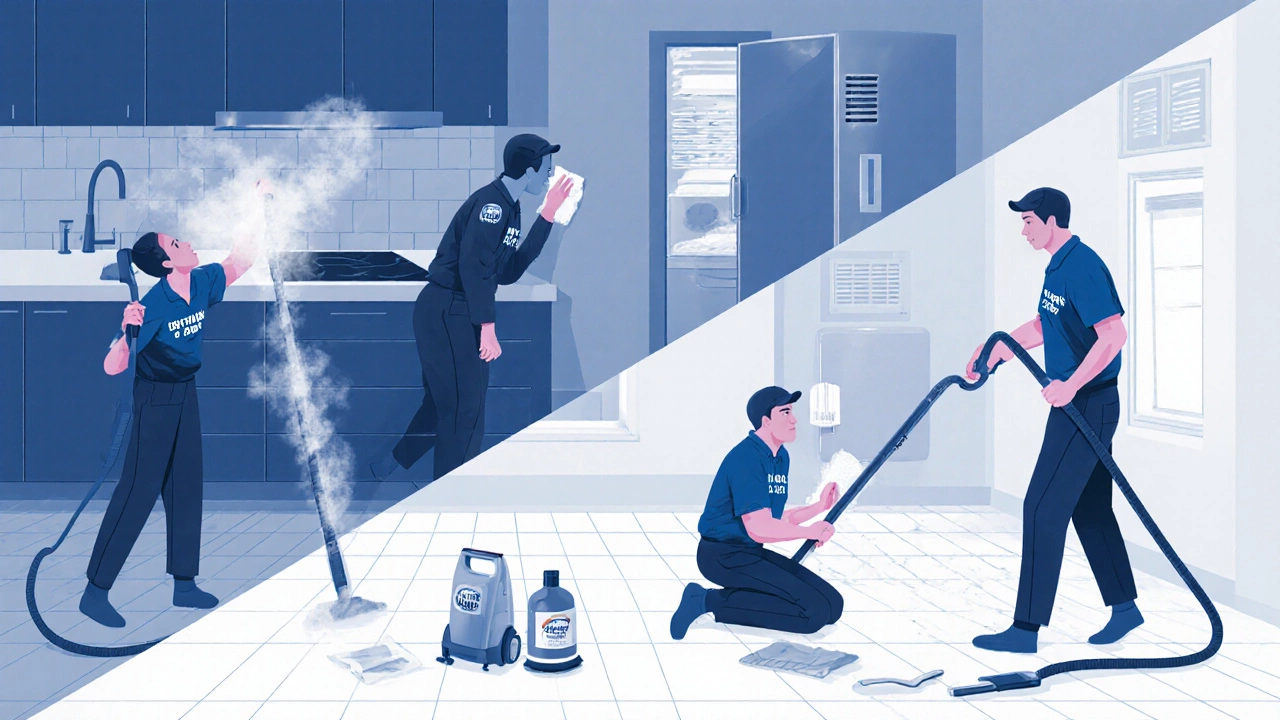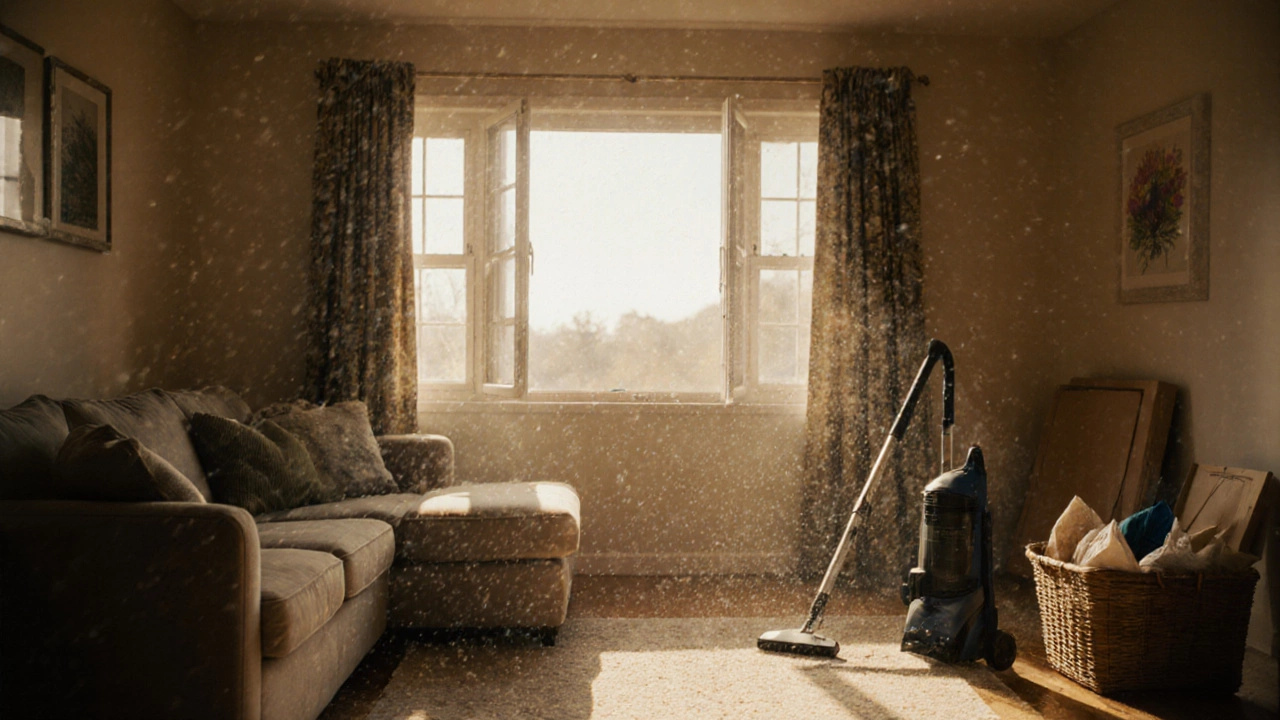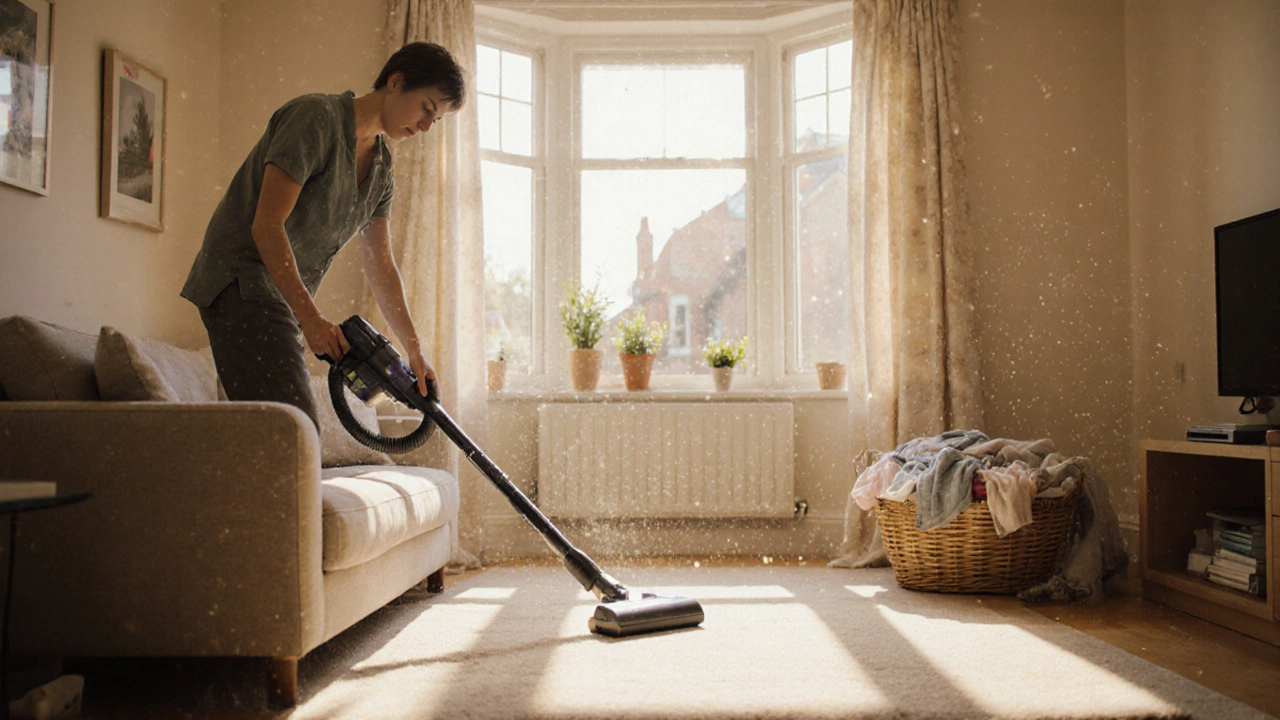Spring Cleaning vs Deep Cleaning Decision Guide
Spring Cleaning
A seasonal refresh focusing on decluttering and general upkeep.
- Declutter and organize
- Wash curtains and windows
- Vacuum carpets and mop floors
- Clean high surfaces and dust
Deep Cleaning
An intensive cleaning that targets hidden grime and allergens.
- Clean behind appliances
- Steam clean upholstery and mattresses
- Sanitize HVAC systems
- Deep clean grout and tile
Assess Your Home
Recommended Cleaning Approach
Answer the questions above to see your recommended cleaning approach.
Suggested Checklist
Ever stared at a dusty shelf and wondered whether it’s time for a quick tidy‑up or a full‑blown overhaul? The line between spring cleaning vs deep cleaning can feel fuzzy, especially when you’re juggling work, kids, and a never‑ending to‑do list. This article unpacks both concepts, shows where they overlap, and gives you a clear roadmap so you can decide which level of clean you actually need - and when.
What exactly is Spring cleaning a seasonal, thorough cleaning routine that targets neglected areas and revives the home’s overall feel?
Spring cleaning is traditionally a once‑a‑year ritual that coincides with longer daylight hours and the natural urge to open windows and let fresh air inside. It’s not just about wiping surfaces; it’s about resetting your living space for the months ahead. Typical tasks include: moving furniture to clean underneath, washing curtains, deep‑scrubbing carpets, and clearing out closets to donate unused items.
How does Deep cleaning a detailed, often professional cleaning that goes beyond everyday chores to eradicate grime, allergens, and hidden buildup differ?
Deep cleaning is more about intensity than timing. It targets the hidden grime that ordinary cleaning misses - grout lines, behind appliances, HVAC vents, and even dust‑mite colonies. While you might schedule a deep clean annually, many homeowners call for it after events like moving in, after a renovation, or when allergy symptoms flare up.

Side‑by‑side comparison
| Aspect | Spring cleaning | Deep cleaning |
|---|---|---|
| Primary goal | Refresh & declutter for the new season | Eliminate hidden grime and allergens |
| Typical frequency | Once a year (spring) | Occasionally - after movers, renovations, or allergy spikes |
| Areas tackled | Closets, curtains, windows, under furniture | Vent ducts, grout, behind appliances, mattress, upholstery |
| Tools & products | All‑purpose cleaners, microfiber cloths, vacuum | Specialised degreasers, steam cleaners, HEPA‑rated vacuums |
| Typical duration | One full weekend | One to three days, often with professionals |
| Professional involvement | Usually DIY, occasional help for large items | Often recommended to hire a professional cleaning service a trained team that uses industrial equipment for thorough sanitation |
When to choose one over the other
Think of your home as a living organism. If the rooms feel stale, the curtains are dusty, and you’ve accumulated a stash of winter coats you never wear, that’s a solid cue for spring cleaning. On the other hand, if you notice a persistent musty smell, experience more sneezing episodes, or you’ve just finished a DIY remodel, it’s time for a deep clean.
- Spring cleaning triggers: Seasonal change, desire to declutter, upcoming guests.
- Deep cleaning triggers: Allergy flare‑ups, post‑construction dust, moving in/out, pet odor buildup.
Building a practical cleaning checklist a step‑by‑step guide that ensures no area is overlooked
Having a checklist keeps the process from turning into a chaotic guessing game. Below is a combined checklist that separates tasks into “Seasonal” (spring) and “Intensive” (deep) buckets. Feel free to tick off what applies to your situation.
- Declutter first - pull out items you no longer need; donate or recycle them.
- Dust high surfaces - ceiling fans, light fixtures, and crown mouldings. Use an extendable duster.
- Window wash - inside and out. A vinegar‑water mix works wonders for a streak‑free finish.
- Floor focus
- Spring: Vacuum carpets, mop hard floors with a pH‑neutral cleaner.
- Deep: Steam‑clean carpets, scrub grout with a baking‑soda paste, polish hardwood with a dedicated wax.
- Appliance attention
- Spring: Wipe exteriors, clear lint traps.
- Deep: Pull out fridge/freezer to vacuum coils, clean oven interior with a citrus‑based degreaser.
- Upholstery & mattress
- Spring: Vacuum with an upholstery attachment.
- Deep: Use a handheld steam cleaner; this also kills dust mites microscopic arthropods that thrive in bedding and trigger allergies.
- Ventilation check
- Spring: Open windows for 15‑minutes each day.
- Deep: Replace HVAC filters, wipe vent grilles with a damp cloth.
Choosing the right cleaning products eco‑friendly or specialised solutions that match the task at hand
For spring cleaning, you can stick with all‑purpose cleaners, mild detergents, and natural solutions like vinegar, lemon, and baking soda. These are safe for most surfaces and keep the household chemical load low. Deep cleaning often calls for stronger agents - enzymatic cleaners for pet odors, commercial‑grade descalers for kettles and dishwashers, and disinfectants with a ≥70% alcohol content for high‑touch areas.
If you’re keen on reducing environmental impact, consider eco‑friendly cleaning products made from biodegradable ingredients, packaged in recyclable containers. Brands like Method, Ecover, or locally‑sourced concentrates work well for both spring and deep tasks.
DIY or hire a professional cleaning service experienced cleaners equipped with industrial tools and expertise?
Both approaches have pros and cons. Doing it yourself saves money and lets you customise every step, but it can be time‑consuming and physically demanding. Professionals bring speed, specialised equipment (e.g., HEPA vacuums, steam extractors), and insurance coverage in case something goes wrong.
Typical cost benchmarks for a three‑bedroom house in the UK (2025 data) are:
- Spring cleaning DIY: £0‑£50 for supplies.
- Deep cleaning DIY: £30‑£80 for specialised tools.
- Professional deep clean: £150‑£300, depending on square footage and extra services.
If you’re battling allergens, have pets, or simply lack the bandwidth, splurging on a professional deep clean can be worth the health benefits.
Common pitfalls and how to avoid them
Even the most enthusiastic cleaners can slip up. Here are a few mistakes to watch out for:
- Skipping preparation - Never start scrubbing before you’ve decluttered. Extra items block access and make you work twice.
- Using the wrong product on a surface - Acidic cleaners can etch marble, while ammonia harms wood finishes. Check labels.
- Neglecting air quality - Dust and cleaning fumes can linger. Keep windows open and run a fan to circulate fresh air.
- Rushing the job - Deep cleaning takes time. Break tasks into manageable chunks across a few days to avoid fatigue.
- Forgetting maintenance - After a deep clean, set a monthly mini‑cleaning routine to keep grime from building up again.

Putting it all together: a practical schedule
Use the table below to plan your year. Adjust dates to fit local weather patterns in Bristol or wherever you live.
| Month | Focus | Key Tasks |
|---|---|---|
| January‑February | Maintenance | Vacuum weekly, wipe kitchen counters, replace HVAC filters |
| March‑April | Spring cleaning | Declutter closets, wash curtains, deep‑vacuum carpets |
| May‑June | Allergen control | Steam‑clean mattresses, clean vent ducts, use HEPA filter vacuums |
| July‑August | Outdoor‑related | Pressure‑wash patios, clean windows inside/out, wash outdoor furniture |
| September‑October | Pre‑winter prep | Check boiler, inspect chimney, deep‑clean kitchen appliances |
| November‑December | Deep cleaning (optional) | Hire professional deep clean, focus on grout, behind appliances, and upholstery |
Quick takeaways
- Spring cleaning is a seasonal, decluttering‑focused refresh; deep cleaning targets hidden grime and allergens.
- Both can be DIY, but deep cleaning often benefits from professional tools or services.
- Use the right products: mild, eco‑friendly cleaners for spring; specialised, stronger agents for deep tasks.
- Plan ahead with a calendar to avoid last‑minute scrambles.
- Regular maintenance between major cleans keeps your home healthier and reduces future workload.
Frequently Asked Questions
Is spring cleaning enough to get rid of dust mites?
Dust mites thrive in warm, humid environments, especially in bedding and upholstered furniture. A thorough spring clean that includes vacuuming can reduce numbers, but to effectively eliminate them you need a deep clean with a steam cleaner or a specialized acaricide. Regular washing of linens at 60°C also helps.
Can I combine spring cleaning and deep cleaning in one weekend?
It’s possible if you have extra hands or hire professionals for the most intensive tasks. Start with the spring cleaning checklist, then move on to the deep‑clean sections like grout and HVAC. Pace yourself to avoid burnout; split the work over two days if needed.
Do eco‑friendly cleaning products work for deep cleaning?
Many eco‑friendly brands now offer concentrated, plant‑based degreasers and enzymatic cleaners that can handle deep‑clean tasks like oven grime or bathroom limescale. Look for products with a high pH for grease and a certified “green” label. They may require a longer dwell time compared to chemical‑heavy options.
How often should I schedule a professional deep clean?
For most households, a professional deep clean every 12‑18 months is sufficient. If you have pets, allergies, or have just completed a renovation, you might want to do it sooner - every 6‑9 months.
What’s the biggest time‑saver during spring cleaning?
Create a clear, room‑by‑room checklist and gather all tools before you start. Using a microfiber mop that doubles as a dust cloth reduces the number of items you need, and working from top to bottom (ceiling fans → floors) prevents re‑dirtying already‑cleaned surfaces.
